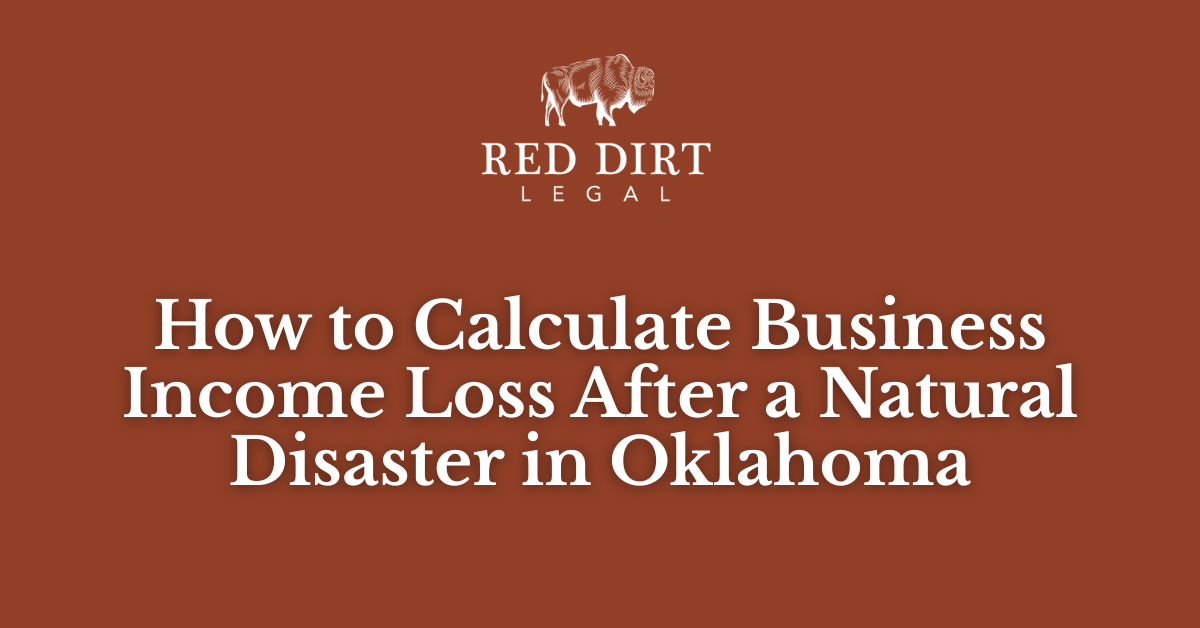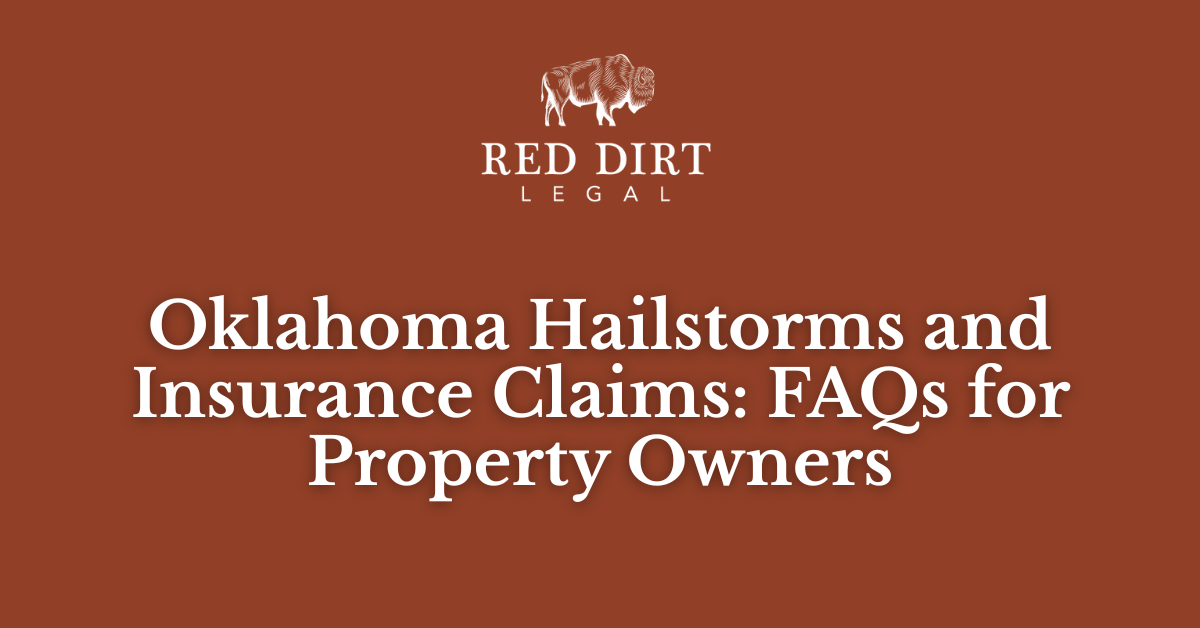Commercial insurance policies often include both property damage and business interruption coverage, but they serve very different purposes. When disaster strikes, understanding the difference between these two parts of your policy can make a major difference in what gets paid, and what doesn’t.
This blog explains how each type of coverage works, when they apply, and how misunderstandings can lead to insurance disputes for Oklahoma business owners.
At Red Dirt Legal, we’ve worked with local businesses navigating complex insurance claims after storms, fires, and other unexpected losses. Here’s what you need to know about these two key forms of protection.
What Is Property Damage Coverage?
Property damage coverage is designed to help repair or replace physical structures and items when they’re harmed by a covered event. In a commercial policy, this usually includes:
- Buildings or storefronts
- Equipment or machinery
- Inventory
- Fixtures, signage, or furniture
Covered events may include fire, wind, hail, vandalism, or water damage (depending on the policy). But not all damage is covered, and exclusions or ambiguous wording can lead to denied or underpaid claims.
Even straightforward damage can trigger disputes if the insurer claims the issue was pre-existing or not caused by a covered peril, something many business owners don’t discover until an attorney reviews the claim language.
What Is Business Interruption Coverage?
Business interruption coverage is meant to help you recover lost income when your operations are disrupted by a covered event. It doesn’t cover the physical damage itself, but the financial losses that follow.
This can include:
- Lost profits
- Ongoing expenses like payroll and rent
- Costs associated with temporary relocation
- Extra expenses to resume operations
However, many policies set strict time limits or payout caps, and may only apply if the interruption stems directly from property damage. If the policy language isn’t clear, business owners may be left without the support they expected.
How These Two Coverages Work Together
These two forms of insurance often apply at the same time. For example, if a fire damages your office:
- Property damage coverage may pay to repair the building and replace damaged equipment.
- Business interruption coverage may reimburse you for lost income while you’re unable to operate.
But if one part is denied or delayed, it can affect the other. A business can’t claim lost income if the insurer refuses to acknowledge the original damage. Disputes like these are common in delayed claim situations, especially when insurers dispute the timeline or scope of the damage.
Common Gaps and Mistakes to Watch For
Even well-meaning policyholders can run into trouble if they don’t understand the details of their coverage. Some frequent issues include:
- Policies that exclude certain types of property damage (e.g., water, mold, or civil unrest)
- Business interruption coverage that only lasts 30 days—far too short for major repairs
- Requirements for detailed documentation before interruption coverage kicks in
- Policies that don’t cover closures caused by utility outages or adjacent property damage
Many businesses only find out about these gaps after a claim has been filed and denied. A careful review of your policy before disaster strikes can help you avoid surprises.
When Policy Disputes Arise
When coverage is unclear or incomplete, insurance companies may issue a partial denial of payment or reject the claim altogether. This can put significant financial pressure on small and mid-sized businesses.
Understanding the distinction between property damage and business interruption can help you challenge unfair decisions, especially if your insurer is attempting to shift responsibility or minimize payout obligations.
Policy language matters, and small differences can have major impacts. These issues often don’t become obvious until they’re reviewed with someone who knows how insurers interpret them, like an attorney experienced in coverage disputes.
Read the Fine Print Before You Need It
If you own or manage a business in Oklahoma, understanding the difference between property damage and business interruption coverage is essential. Don’t wait until after a loss to find out what your policy does and doesn’t cover.
And if you’re already dealing with a claim issue, documentation, timelines, and a clear understanding of your policy terms are key.
If your insurance company has delayed, denied, or underpaid your commercial claim, contact Red Dirt Legal to learn what steps you can take next.










